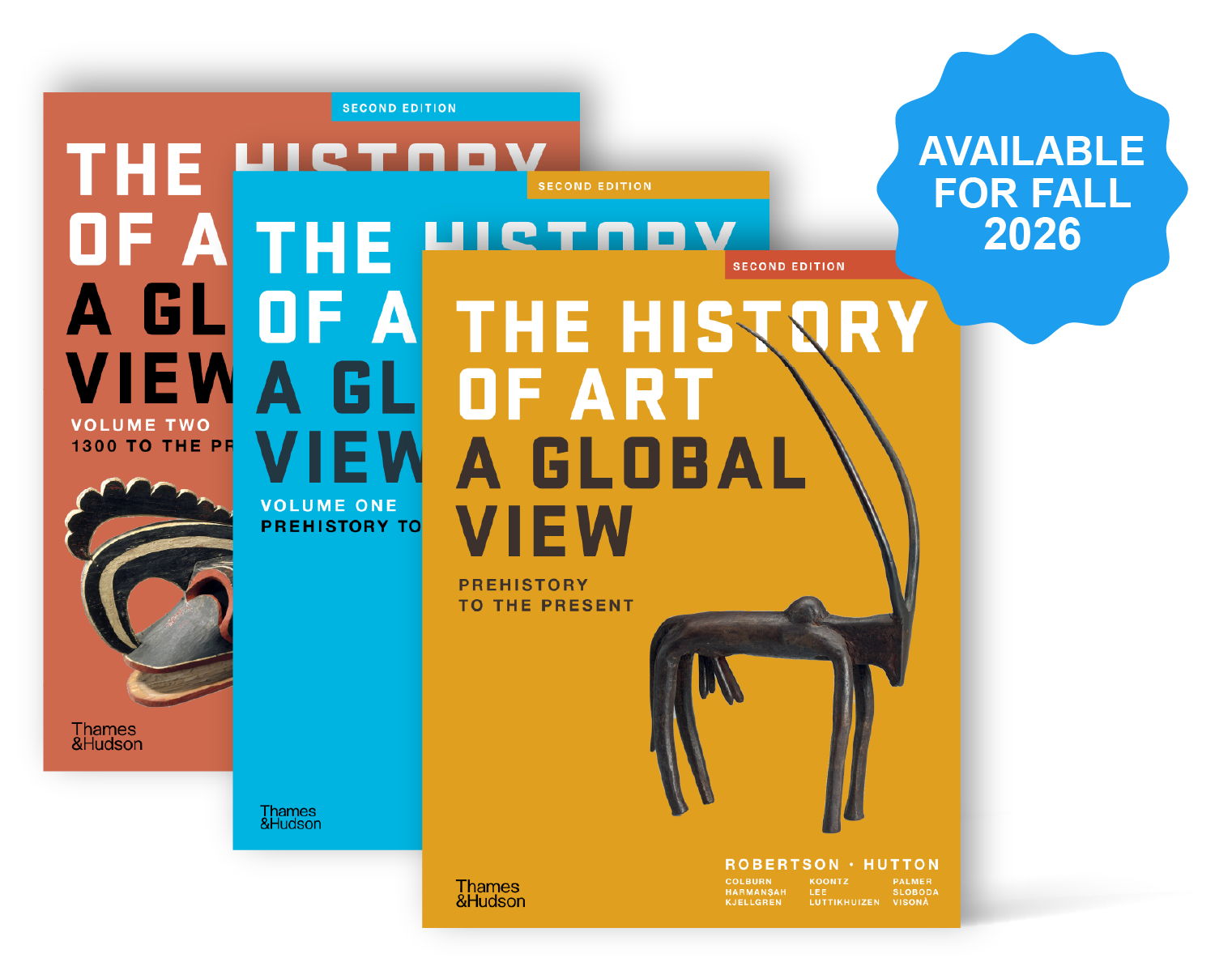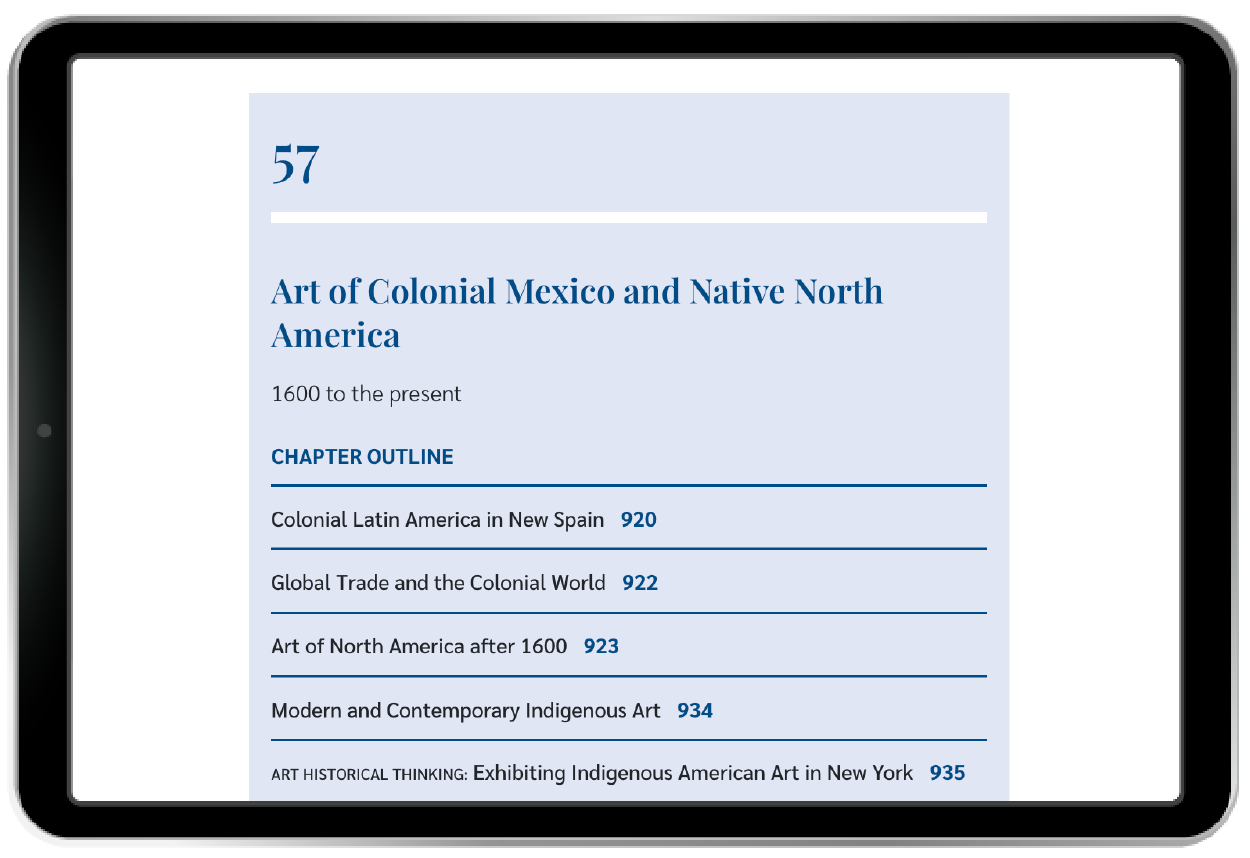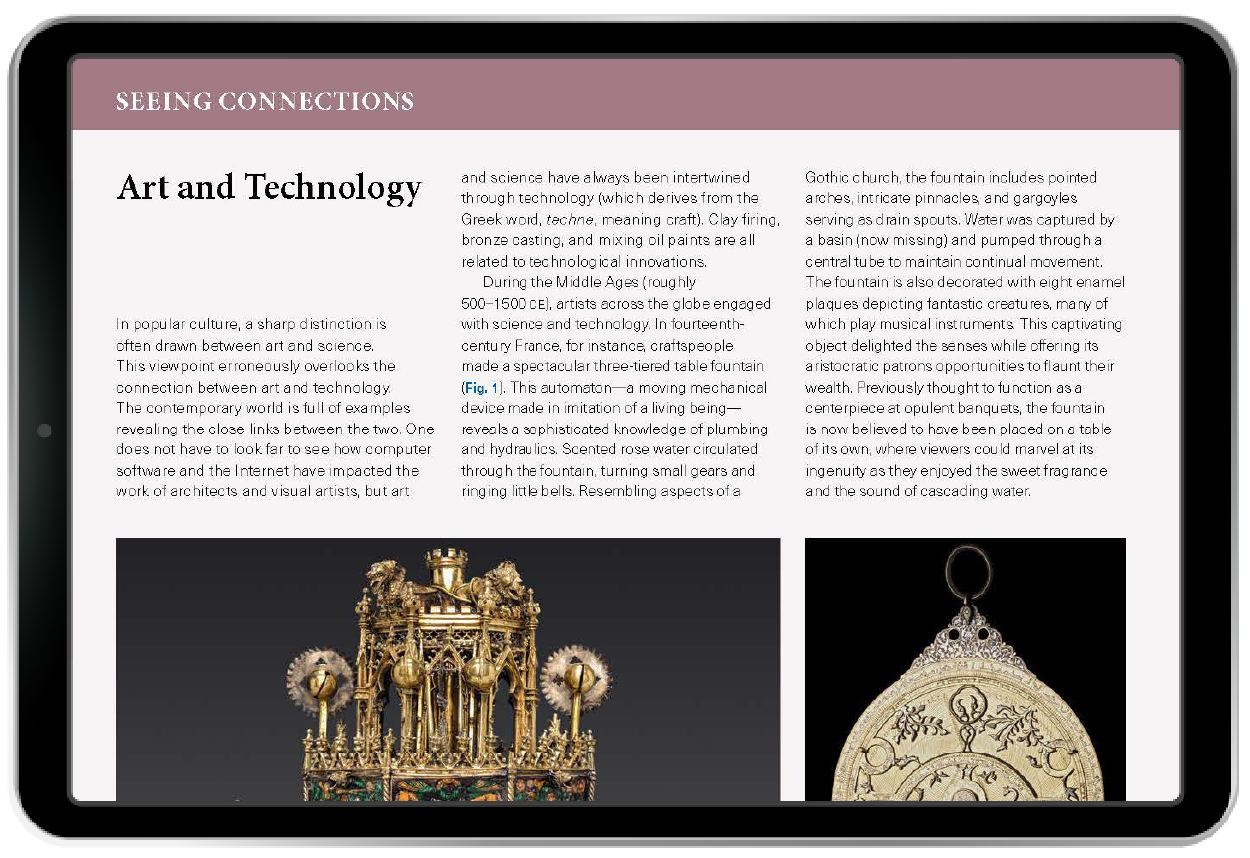

A flexible, global approach that helps students draw cross-cultural connections and see the big picture
Explore the demo chapter

The History of Art: A Global View features brief chapters flexible enough to be assigned in any order, with pedagogy that supports building art historical skills. The new Norton Illumine Ebook includes end-of-section concept check questions that help students build confidence and comprehension, and “Looking More Closely” interactives that allow students to practice visual analysis.

Brief, modular chapter structure allows for flexible assignment.
The History of Art is designed to work with a variety of classroom approaches. Averaging just sixteen pages in length, chapters are not interdependent so they can be reordered or skipped, allowing you to determine the scope of global coverage and focus of your course.

Encourages students to draw cross-cultural connections and see the big picture of art history.
A chronological structure illustrates how art forms developed simultaneously around the globe. Two-page Seeing Connections features and new LINKAGES prompts incorporated into the chapters explore shared approaches, techniques, and styles, helping students to compare and draw connections across different cultures.

Pedagogy that gets students doing art history
Four types of features integrated throughout the text—Art Historical Thinking, Looking More Closely, Going to the Source, and Making It Real—support critical thinking about art, develop visual analysis skills, help analyze primary sources, and describe materials, styles, and techniques.
Hello from the authors. . .
What instructors are saying about The History of Art: A Global View
Instructors, get access to a preview of the ebook and online resources
Are you also interested in receiving a physical copy?

Meet your marketing manager: Marlee
Marlee is your contact for queries about The History of Art and any of Thames & Hudson’s other college titles. Reach out to learn more about our offerings for art and art history, schedule a demo of our dynamic digital tools, or get connected with your local team.

Copyright © W. W. Norton & Company, Inc. 2026



![Explore all [DISCIPLINE] titles](https://client-data.knak.io/production/email_assets/633dac4655ece/Kfkh4zDQtqhIwqOXNa7ERyoVwMUNKFeYQ6KOTIa2.png?utm_source=landing-page:686fd2d923ad0)
![Watch [DISCIPLINE] online events](https://client-data.knak.io/production/email_assets/633dac4655ece/CxCTpzIUGYDJRIMl7C7WinG1GujAz1e3TJRcntap.png?utm_source=landing-page:686fd2d923ad0)


